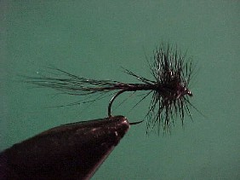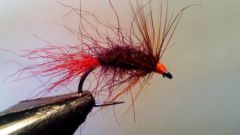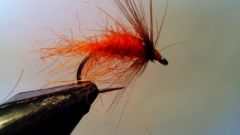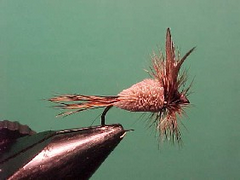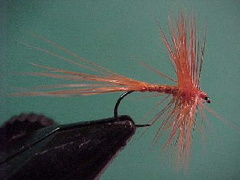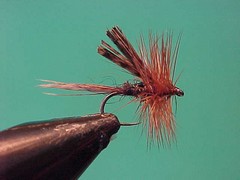Black spinner
The term spinner is generally used only in the context of referring to a small number of Mayflies including Black, Red and Orange Spinners when they are both on the water and in the air. The following Spinner is a generic representation for members of the “Leptophlebiidae” family of Mayflies and the various Highland Duns & Spinners, which are members of the “Oniscigastridae” family. Hatches generally occurs between the months of October and March.

